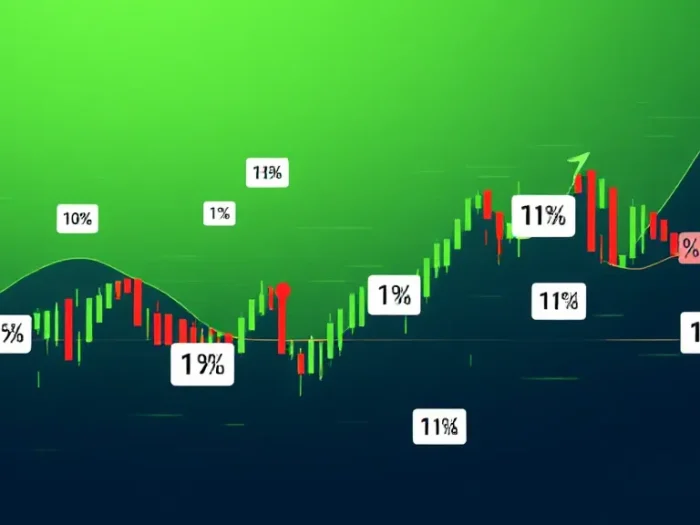Scalping is a day trading strategy that focuses on capturing small profits from numerous trades throughout the trading day. Scalpers aim to profit from small price movements, often holding positions for only a few minutes or even seconds. This article will explore the scalping strategy, explaining its core principles, entry and exit techniques, risk management, and how to potentially achieve quick 1% gains multiple times daily.
Understanding Scalping in Day Trading
Scalping is a high-frequency trading strategy that seeks to capitalize on small price fluctuations. Scalpers execute a large number of trades, aiming to accumulate small profits that add up to a larger overall gain. This strategy requires quick execution, discipline, and a focus on minimizing risk.
Key Principles of Scalping
-
High Frequency: Scalpers execute a large number of trades per day, sometimes hundreds.
-
Small Profits: The goal is to capture small gains per trade, such as a few cents or a small percentage (e.g., 1%).
-
Short Holding Times: Positions are held for very short periods, ranging from seconds to minutes.
-
Tight Spreads: Scalpers often trade instruments with tight bid-ask spreads to minimize transaction costs.
-
Liquidity: High liquidity is essential to ensure quick entry and exit from trades.
Scalping Strategy: Entry and Exit Techniques
Successful scalping requires precise entry and exit techniques to maximize profits and minimize losses.
Entry Techniques:
-
Support and Resistance: Enter trades near key support levels in an uptrend or resistance levels in a downtrend.
-
Breakouts: Trade breakouts or breakdowns of short-term price patterns.
-
Momentum: Enter trades in the direction of strong price momentum.
-
Order Book Analysis: Use Level 2 data to identify imbalances in buying and selling pressure.
Exit Techniques:
-
Profit Targets: Set small profit targets based on the expected price movement (e.g., 1% or less).
-
Stop-Loss Orders: Use tight stop-loss orders to limit potential losses if the price moves against you.
-
Time-Based Exits: Exit trades after a predetermined period, regardless of profit or loss.
Risk Management in Scalping
Risk management is crucial for scalping, as the high frequency of trades can lead to significant cumulative losses if not managed properly:
-
Limit Capital at Risk: Risk only a very small percentage of your trading capital per trade (e.g., 0.5% or less).
-
Use Stop-Loss Orders: Always use stop-loss orders to automatically exit losing trades.
-
Control Leverage: Avoid excessive leverage, as it can amplify both profits and losses.
-
Minimize Transaction Costs: Trade with a low-commission broker and focus on instruments with tight spreads.
Achieving 1% Gains Multiple Times Daily
The potential to achieve 1% gains multiple times daily is a key draw of scalping. However, it’s essential to understand that this is an ambitious goal that requires:
-
High Win Rate: To achieve consistent profitability, scalpers need a high win rate (e.g., 60% or higher).
-
Efficient Execution: Orders must be executed quickly and accurately to capture small price movements.
-
Market Conditions: Scalping is often more effective in volatile markets with sufficient liquidity.
-
Discipline and Focus: Scalping demands intense focus and discipline to adhere to the strategy and avoid emotional trading.
Important Considerations
-
Technology: Scalping requires fast execution speeds, reliable technology, and a low-latency trading platform.
-
Commissions and Fees: Transaction costs can significantly impact profitability in scalping. Choose a low-cost broker.
-
Stress: Scalping is a high-pressure trading style that can be stressful for some traders.
Conclusion
The scalping strategy can offer the potential for quick 1% gains multiple times daily, but it’s a high-frequency, high-intensity trading style. It requires precise entry and exit techniques, strict risk management, efficient execution, and a disciplined approach. Achieving consistent profitability through scalping is challenging and requires significant skill and practice. This information is for educational purposes only and should not be considered financial advice. Always consult with a qualified financial advisor before making any trading decisions.
Related Keywords
Scalping strategy, day trading strategy, high-frequency trading, scalping trading, short-term trading, day trading, trading strategies, scalping for profit, scalping technique, scalping stocks.
Frequently Asked Questions (FAQ)
1. What is scalping in day trading?
Scalping is a high-frequency day trading strategy that focuses on capturing small profits from numerous trades throughout the trading day.
2. What are the key principles of scalping?
Key principles include high-frequency trading, small profit targets, short holding times, tight spreads, and high liquidity.
3. What are some entry techniques used in scalping?
Entry techniques can include trading near support and resistance levels, trading breakouts, entering with momentum, and using order book analysis.
4. What are some exit techniques used in scalping?
Exit techniques include setting small profit targets, using tight stop-loss orders, and employing time-based exits.
5. How is risk managed in scalping?
Risk management in scalping involves limiting capital at risk per trade, always using stop-loss orders, controlling leverage, and minimizing transaction costs.
6. Is it easy to achieve 1% gains multiple times daily with scalping?
Achieving consistent 1% gains multiple times daily is an ambitious goal that requires a high win rate, efficient execution, favorable market conditions, and intense focus and discipline.
7. How does technology affect scalping?
Scalping requires fast execution speeds, reliable technology, and a low-latency trading platform to capture small price movements effectively.
8. How do commissions and fees impact scalping profitability?
Transaction costs can significantly impact profitability in scalping due to the high frequency of trades, so choosing a low-cost broker is essential.
9. Is scalping a high-pressure trading style?
Yes, scalping is a high-pressure trading style that can be stressful for some traders due to the fast-paced nature and the need for intense focus.
10. Is scalping a suitable strategy for all traders?
Scalping is a challenging strategy that requires significant skill, discipline, and the ability to handle pressure. It may not be suitable for all traders, especially beginners.



